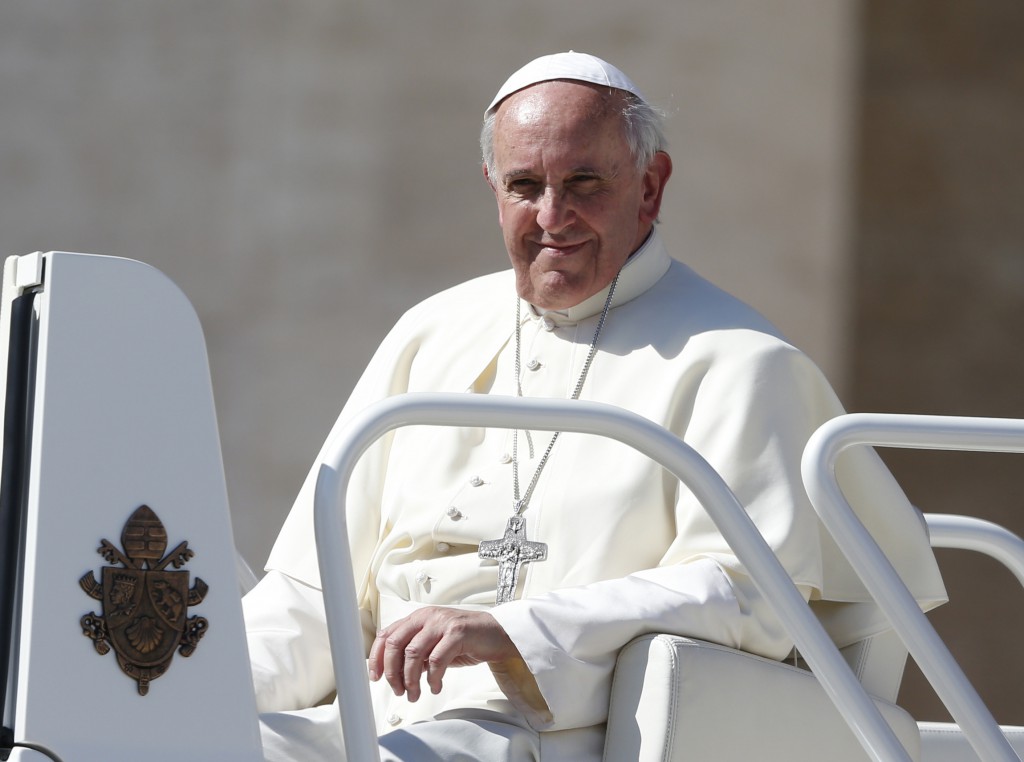
By Carol Glatz
Who are the holy men and women Pope Francis looks up to? He revealed many of them in two recently published interviews.
While a top-eight list does emerge from the interviews, the pope rejected one interviewer’s attempts at giving them a ranking.
“Rankings are for sports or things like that. I could tell you the name of the best soccer players in Argentina. But the saints …” he told Eugenio Scalfari in an interview published by an Italian daily, La Repubblica, Oct. 1.
Here then, in no exact order, are the saints Pope Francis has a particular fondness for or credits with playing an important role in his religious formation. The names are taken from the La Repubblica interview; the Sept. 19 interview with the Jesuit journal, La Civilta Cattolica; and a 2010 book-length compilation of interviews with Sergio Rubin and Francesca Ambrogetti, titled “Pope Francis: Conversations with Jorge Bergoglio.”
— St. Augustine: This fifth-century church father and theologian is a favorite of retired Pope Benedict XVI and for his successor.
In a talk on the saint’s feast day Aug. 28, Pope Francis said Christians must follow St. Augustine’s example and refuse to become “anesthetized by success, by things, by power,” but let themselves be restless for God. They also must never tire of sharing the good news of God’s love and promise of salvation with others who are as lost as the saint was.
— St. Francis of Assisi: The pope took his name after this 13th-century Italian friar.
“He’s great because he is everything. He is a man who wants to do things, wants to build, he founded an order and its rules, he is an itinerant and a missionary, a poet and a prophet, he is mystical. He found evil in himself and rooted it out. He loved nature, animals, the blade of grass on the lawn and the birds flying in the sky. But above all he loved people, children, old people, women. He is the most shining example of that agape,” that is, to love one another as Jesus loved, the pope told La Repubblica.
— St. Paul the Apostle: “St. Paul is the one who laid down the cornerstones of our religion and our creed. You cannot be a conscious Christian without St. Paul. He translated the teachings of Christ into a doctrinal structure that, even with the additions of a vast number of thinkers, theologians and pastors, has resisted and still exists after two thousand years,” he told La Repubblica.
In a May homily, the pope said St. Paul is a model for pastors because he worked with his own hands and “didn’t have money in the bank.” The apostle explained that priests and bishops must serve the flock with tenderness and love, helping them grow and protecting them from danger, Pope Francis said.
— St. Ignatius of Loyola, the 16th-century founder of the order the pope comes from, the Society of Jesus.
“Jesuits were and still are the leavening — not the only one but perhaps the most effective — of Catholicism: culture, teaching, missionary work, loyalty to the pope.” Ignatius, he said, “was a reformer and a mystic,” which is critical for the church because “a religion without mystics is a philosophy.”
— St. Benedict: This sixth-century Italian monk is most famous for his rule for living, working and praying in community, which still guides the lives of Benedictine abbeys around the world.
While Pope Francis has not spoken more in-depth about this saint, the Benedictine spirituality seeks a balanced way of living with prayer, work and rest that does not ignore the primacy of God. It is also about living out the Gospel by being faithful in the little things of everyday life.
— St. Thomas Aquinas: This 13th-century Dominican theologian and philosopher taught that pride is humanity’s greatest enemy because it leads a person to believe he or she is self-sufficient and hinders the person from having a relationship with God.
Pope Francis, too, said, “The sin that repulses me most is pride.” In an interview with Rubin and Ambrogetti, the future pope said whenever he has acted like a big shot “I have felt great embarrassment, and I ask God for forgiveness because nobody has the right to behave like this.”
— St. Joseph: The pope keeps in his room a statue of St. Joseph sleeping, and he has a symbol of St. Joseph — the spikenard flower — on his papal coat of arms.
In his homily at his inaugural Mass March 19, the feast of St. Joseph, Pope Francis said that in the Gospels, “St. Joseph appears as a strong and courageous man, a working man, yet in his heart we see great tenderness, which is not the virtue of the weak, but rather a sign of strength of spirit and a capacity for concern, for compassion, for genuine openness to others, for love.”
— St. Therese of Lisieux: The pope used to keep a photo of this 19th-century French Carmelite nun on his library shelf when he was archbishop of Buenos Aires. He told Rubin, “When I have a problem I ask the saint, not to solve it, but to take it in her hands and help me accept it, and, as a sign, I almost always receive a white rose.”
In a recent homily, he said St. Therese displayed patience, trust in God and a “spirit of humility, tenderness and goodness,” that God “wants from all of us.” – CNS